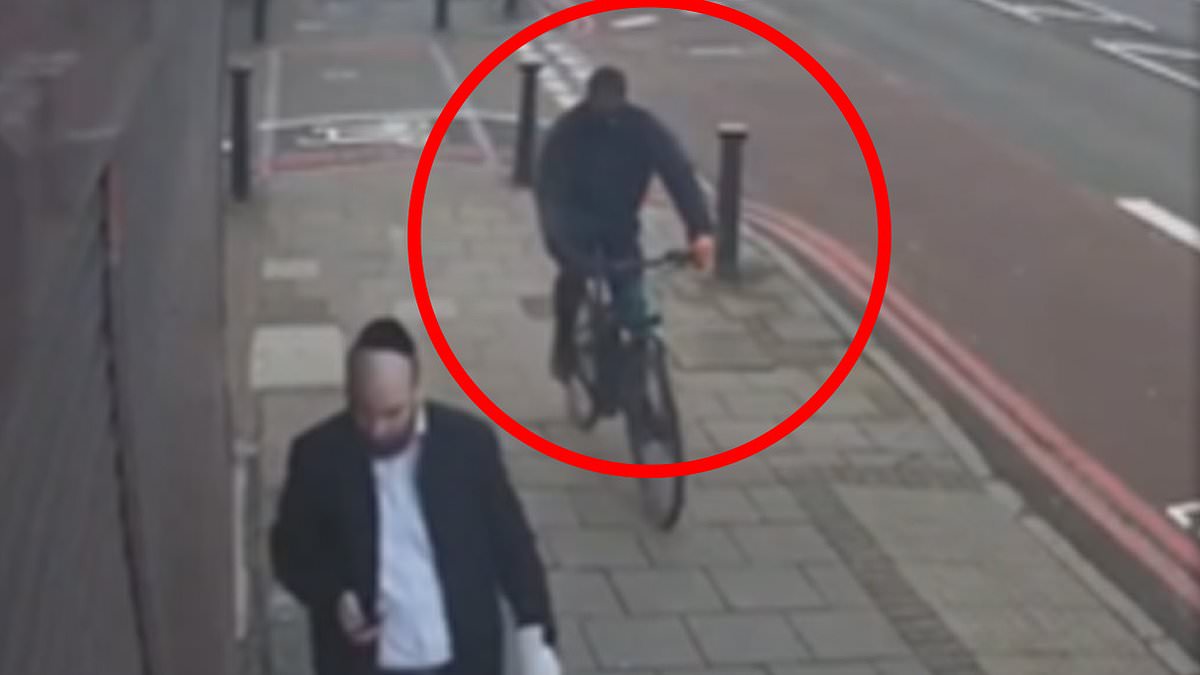A bungling thief dropped a stolen phone after swiping the device from a man’s hand in North London.
The shocking footage shows two cyclists dressed in black racing along the pavement on January 2 on High Road in Stamford Hill, just down from South Tottenham station.
At roughly 8.55am, one of the cyclists can then be seen slowing down as he passes a man dressed in a black suit looking at his phone.
Before the man can even react, the cyclist suddenly snatches the device out of his hand and races away along the pavement.
The man dressed in the suit can be seen panicking before calling for help to chase down the thief.
However, amazingly, the footage appears to show the thief dropping the stolen phone out of his hand without anyone noticing.
Neither the victim or the person who helps him chase down the phone snatcher realise that a device has been dropped and they run past it on the floor.
The Metropolitan Police said they were aware of this video and other similar cases.
This comes after it was revealed by ‘s Deep Dive team what happens to your phone after it is swiped away.
If it is ever pinched by balaclava-clad thieves patrolling the streets of central London, instead of being flogged second-hand in a shop or market stall near the scene of the crime, it will likely end up 6,000 miles away in China’s own ‘Silicon Valley’.
There, your stolen device will either be sold on cheaply or broken down and harvested for precious metals.
Criminal gangs using high-powered e-bikes or scooters target victims in busy locations, such as London’s Oxford Street and the surrounding affluent Mayfair neighbourhood.
Thieves – typically dressed in all black and donning balaclavas or masks – approach unsuspecting victims from behind, snatching the mobile phone from the person’s hand before speeding off.
Women, especially female tourists, are often targeted by the criminals, who can steal more than 20 handsets in a single morning.
Often the snatcher, once they’ve fled the scene of the crime, will pass on the stolen handset to an affiliate to avoid being caught by the police and charged with robbery.
By passing on the phone, the second person risks facing a less serious charge of handling stolen goods unless officers can prove beyond reasonable doubt the transfer took place – as the second person could claim they found the device on the ground.
After a phone is stolen, there is often a race against time between the criminal and the victim over control of the handset.
Snatchers then sell the handsets to brokers – who typically are involved in other organised crime, such as selling drugs and trafficking – who place the devices into a ‘Faraday cage’ to prevent it from broadcasting its location and making it impossible to track.
Once the broker has a sufficient number of phones, usually in the region of at least 100, they are typically sent by sea to Shenzhen in China, using the Suez canal and down past India, and through the highly congested Malacca Strait which divides Malaysia and Sumatra towards its destination.
Research conducted by the Metropolitan Police followed more than 4,000 Apple iPhones reported stolen in London. Of the handsets taken, 70 per cent had an activation or a screen lock enabled.
has contacted the Met Police for comment.
